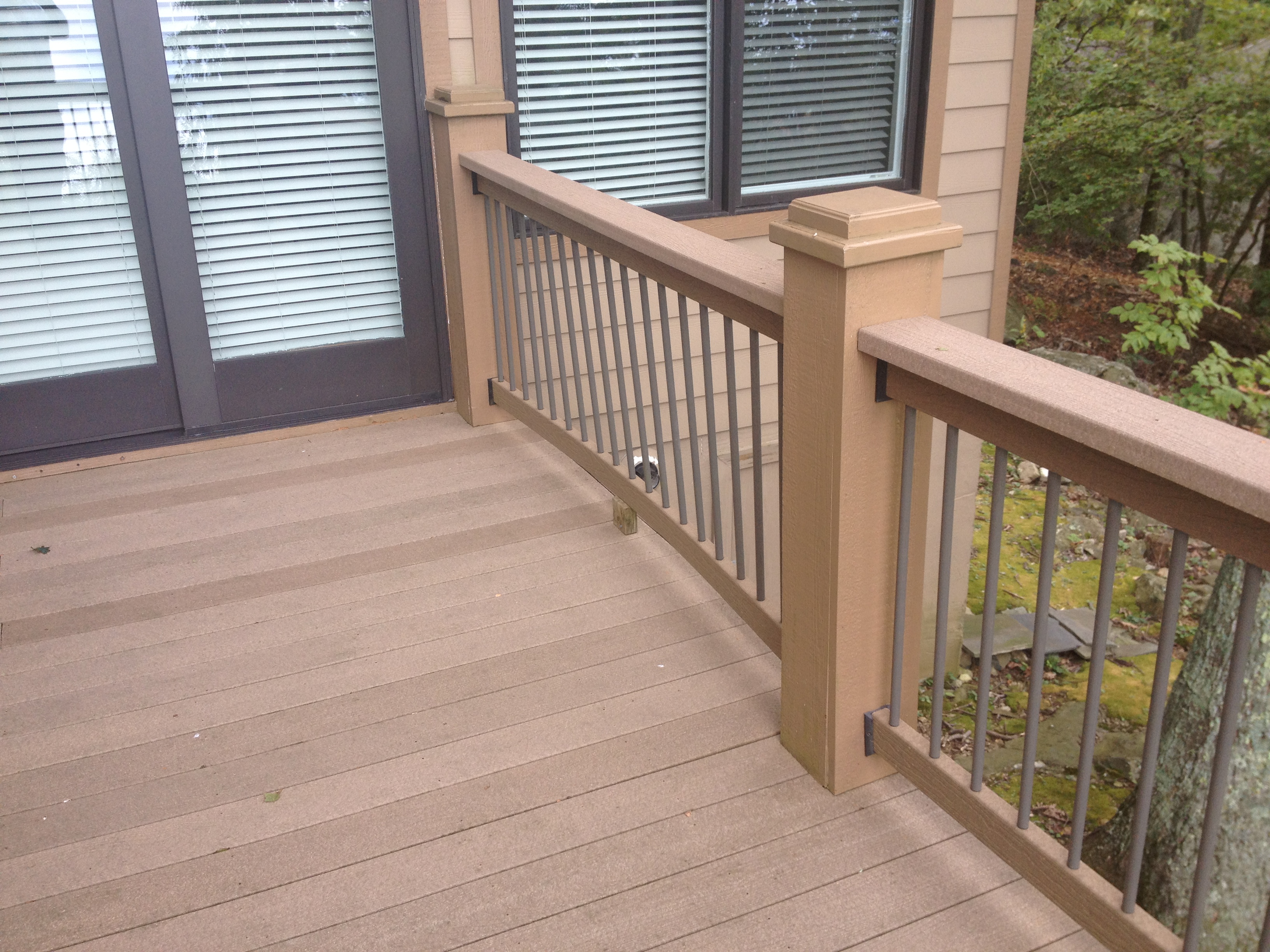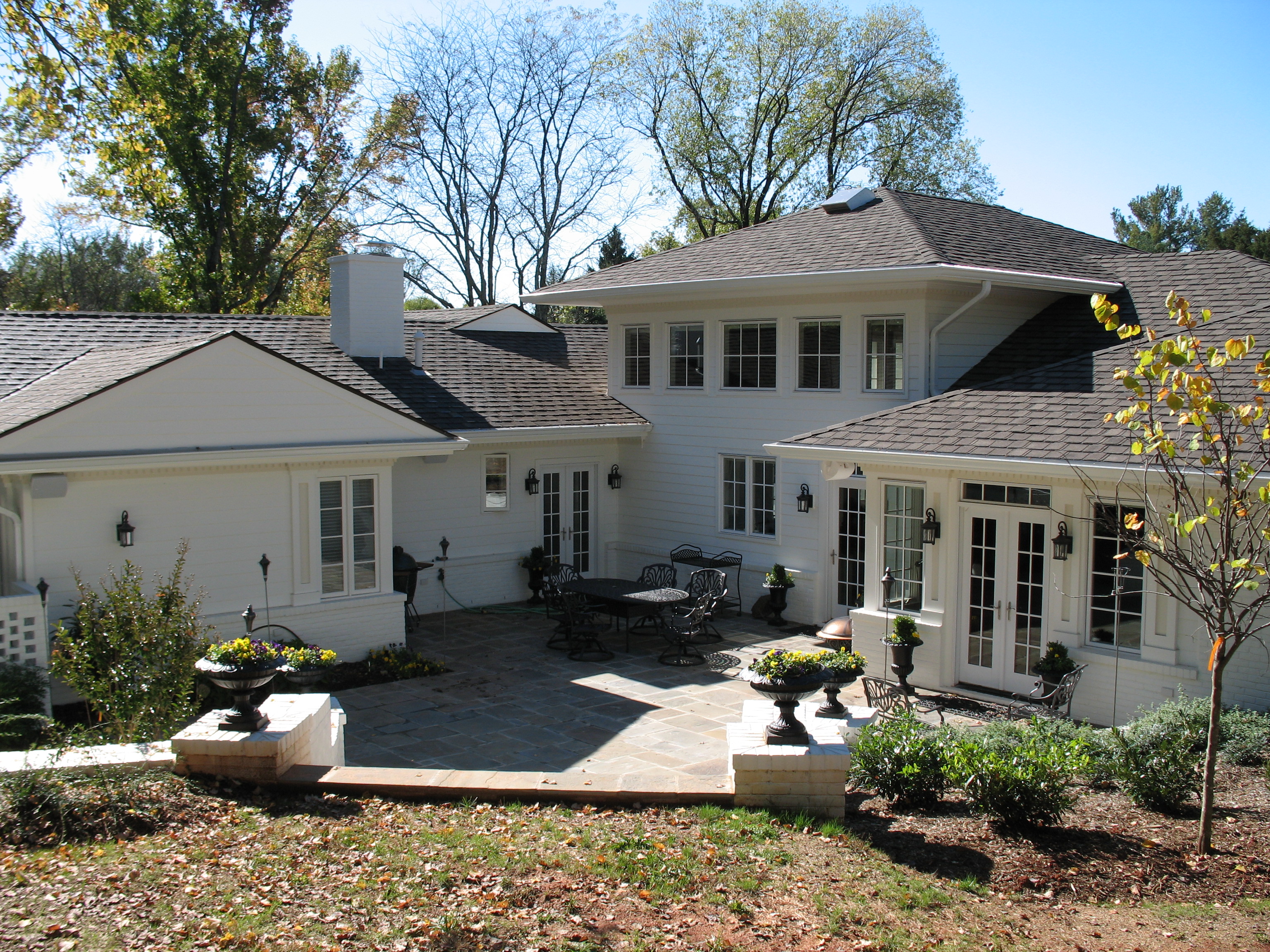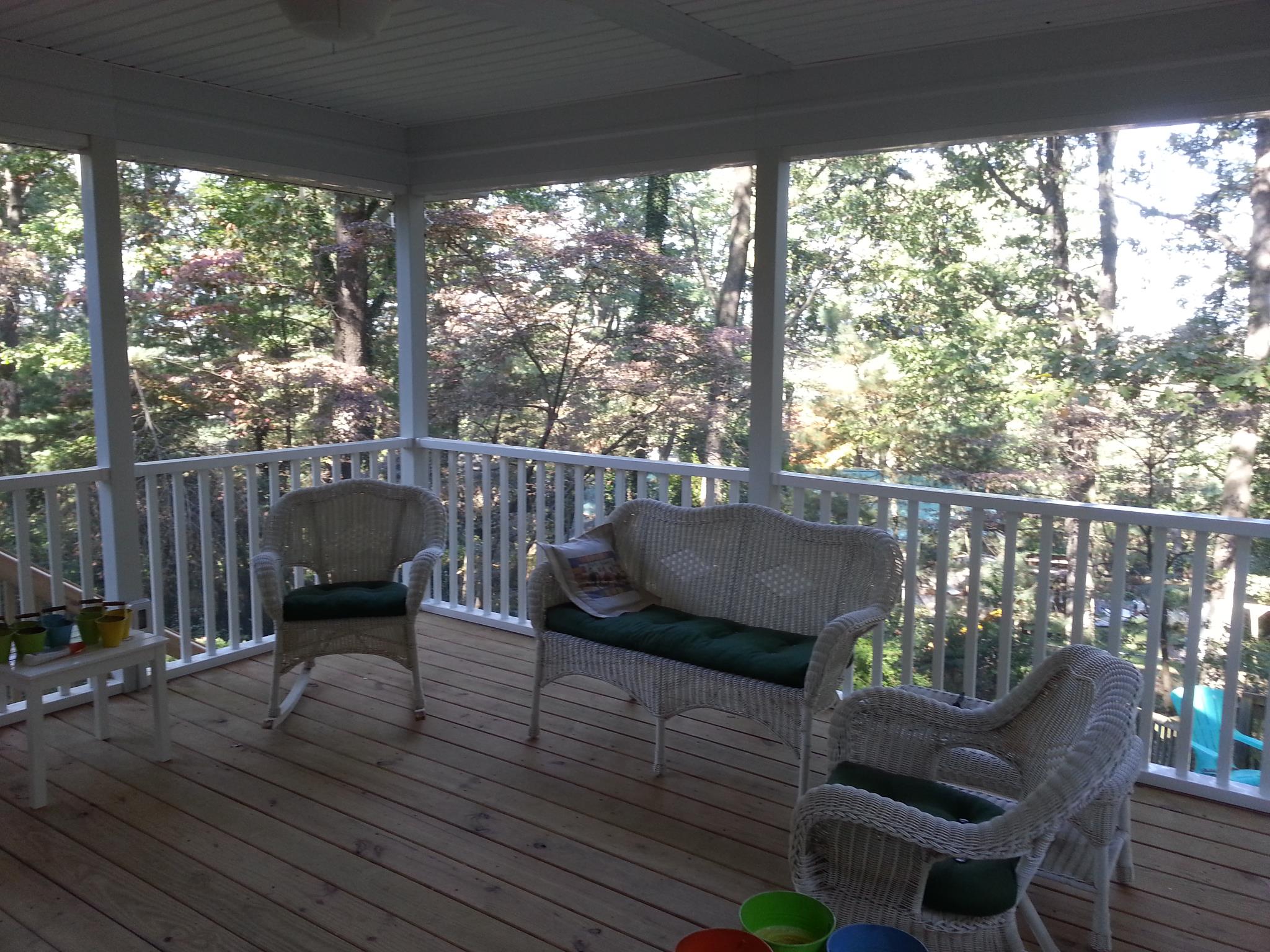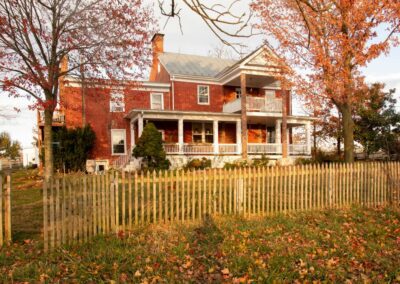A back deck is almost standard on a new home these days. There used to be one solution, pressure treated wood for most homes. Now there are countless options depending on your budget. So what is right for your deck project?
1. The economic answer is still pressure treated. However, as you probably already know, this requires regular maintenance to make it last and look good. Most clients that use pressure treated
understand that it is not going to last as long and will require maintenance. Most pressure treated is southern yellow pine – easy to find, mill, cut, and low cost. With routine maintenance this building product will have a long life. ($1-2 per linear foot)
2. Composite decking options are more expensive than pressure treated. Trex or Timbertech are two manufacturers, but there are also many others. Composite decking are extremely weather and stain resistant, and don’t splinter, warp, or rot. They make handrails, balusters, fascia, and decorative trim to match the decking product (be sure to price the entire package before making a selection as some of these railing systems are very pricey). This option is very ow maintenance and will not need to be stained or refinished. They will grow mold / mildew in shady, damp areas and some will show signs of decay. If your primary goal is budget then go with another option. If your primary goal is low maintenance, this may be the right option for your deck. ($3-4 per linear foot – the decking is a lot less than the railing systems)

3. Another option, also more expensive than pressure treated, is tropical wood. Ipe along with many other options, is extremely hard and very durable. They are heavy, hard to cut and drill, and are often special order items from the lumber yard. Most tropical woods will not accept a stain very well. You should apply some sort of UV-blocking preservative every few years to maximize performance of this material. When buying tropical wood, check with your lumber yard to ensure that you can get it certified by the Forest Stewardship Council. This will give you peace of mind that your deck was harvested in a legal and sustainable manner. ($4-5 per linear foot)
4. The longest lasting and more durable option (but as the saying goes, you get what you pay for) is pre-cast concrete plank or poured in place deck. This approach will give you plenty of finish options from stain to stamped. The decking done right will last for many generations and remain low maintenance. You will want to seal the concrete to prevent moisture being absorbed into the material, but this can be done with little effort every couple of years. ($10-15 per square foot)

5. My favorite option though is an at grade patio. If the design of your home allows for this option, it is the most cost-effective / longest lasting solution possible for outdoor hard surface space. There are many options and many pricing variations within the context of at grade patios – from pavers, to found stones, but all give a beautiful solution. The most important part of this approach from a design standpoint is that you have a direct connection, literally, to the land around your patio. This makes the backyard an easy extension of your living space. At least in my own experience, a raised deck creates a sense of separation that keeps you from going out in the yard on a regular basis. Not every home design or for that matter, building lot, will allow for this solution, but it is certainly my favorite when it is possible.





